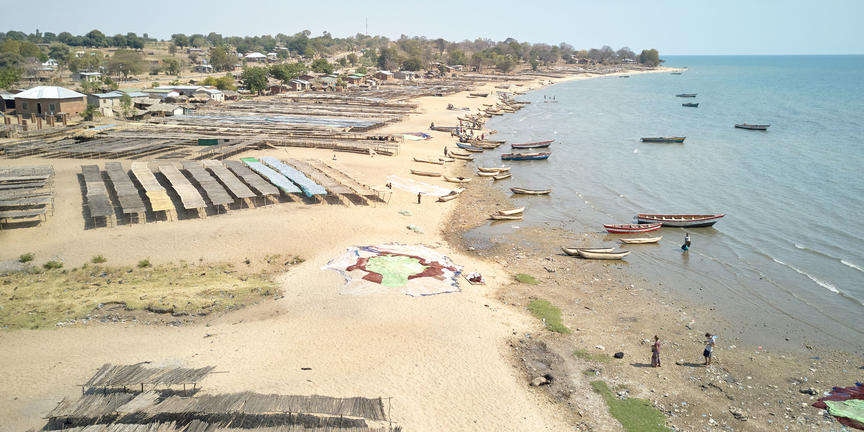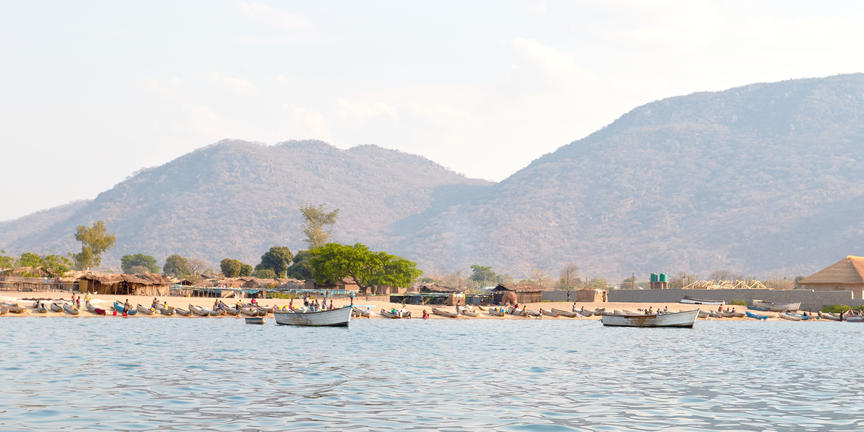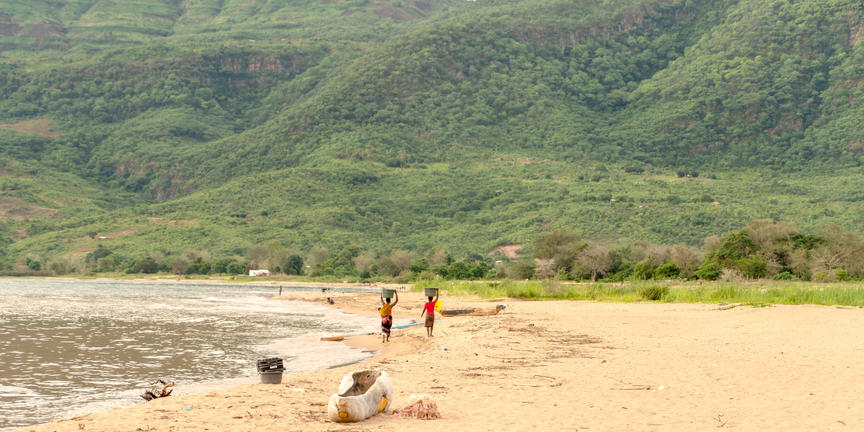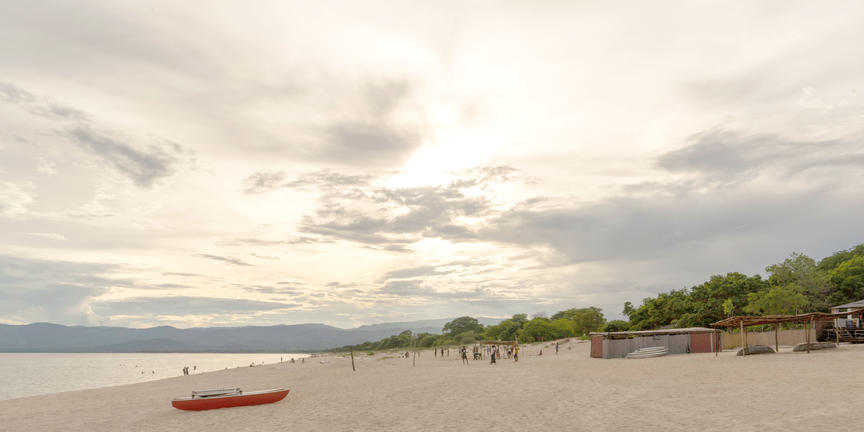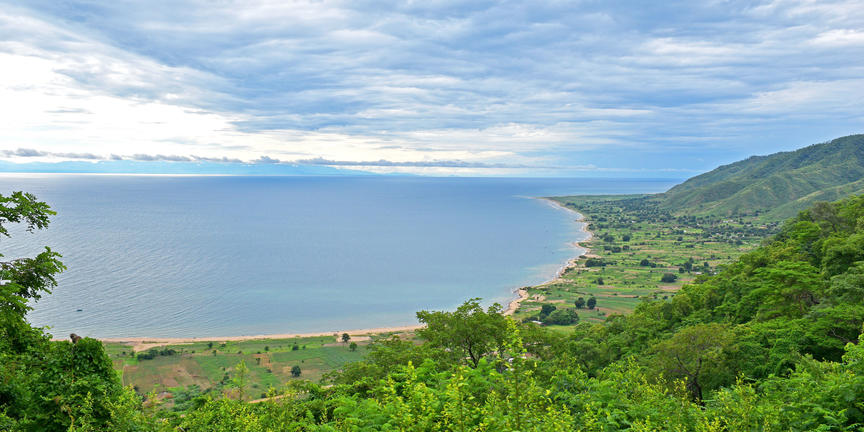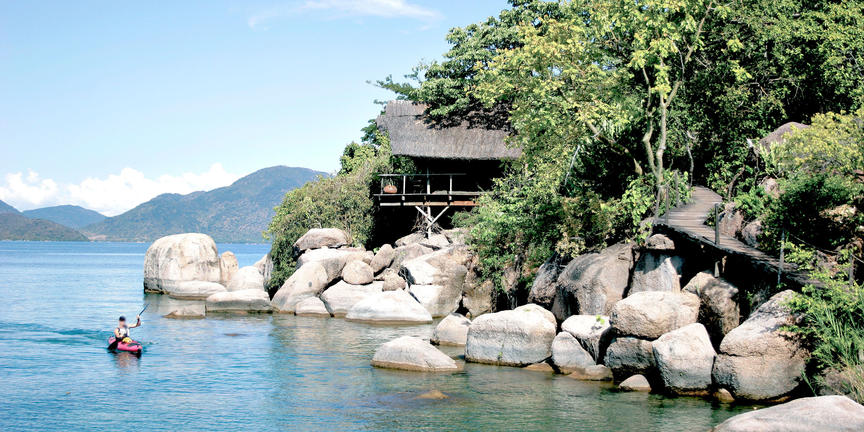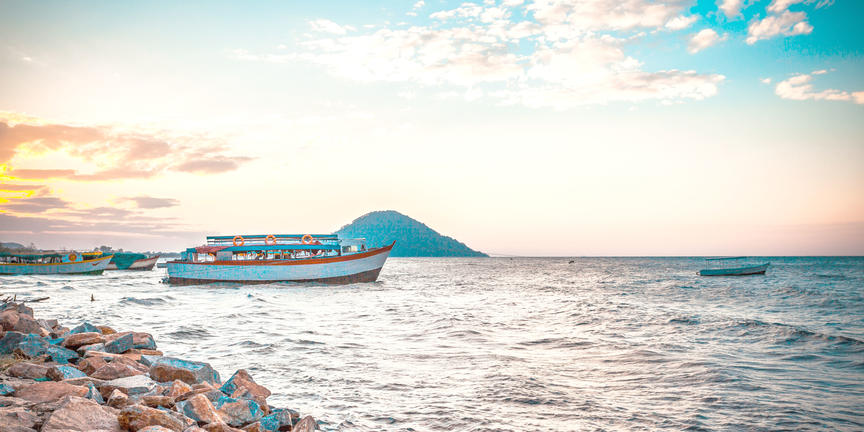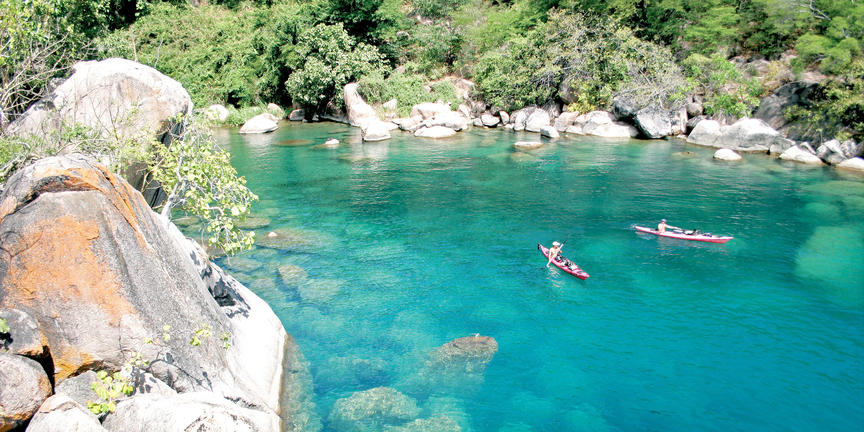Lake Malawi is the stellar attraction of Malawi, enriching every aspect of its life. It is a vast expanse of bright blue water, 600km long and up to 80km wide, constituting some 20% of the surface area of Malawi. The lakeshore comprises miles of palm-fringed sandy beaches, rounded granite boulders and romantic wooded islands, with the call of the African fish eagle ever present. A few small beach lodges are dotted along the shore line interspersed with picturesque fishing villages blending into the natural vegetation. Everywhere people smile and seem delighted to see you.
Over 2,000 species of fish occur in the crystal-clear waters of Lake Malawi, including the colourful endemic cichlids that are easily spotted when snorkelling. At 700m it is incredibly deep its lowest point is more than 200m below sea level. Other watery holiday activities on Lake Malawi include scuba diving, kayaking, sailing and just chilling out by the lapping waters. Visits to local villages are also on offer from some of the beach lodges.
The beatuiful mountainous terrain surrounding much of the lake does not make for productive farming. So the lake is an integral part of the Malawi economy. (Fish such as chambo and kapenta make up the main protein source for people, estimated to be 70% of the protein diet for the people of Malawi.) Fishing at night using lights and paddle bangs to attract the fish is a common sight. Sometimes the lake is charmingly lit with the tiny lights of the many fishermen.
Although in Mozambican waters Likoma Island is a Malawian island. Likoma is typically reached by daily charter flights from Lilongwe. The island is famous for its cathedral which is as big as Winchester Cathedral. The vast building, which was begun in 1903, has numerous interesting stained glass and carved soapstone features.
In the South of Lake Malawi, Cape Maclear is one of its premier destinations surrounded by its Marine Park. It is renowned for both its sunsets and its snorkelling.
